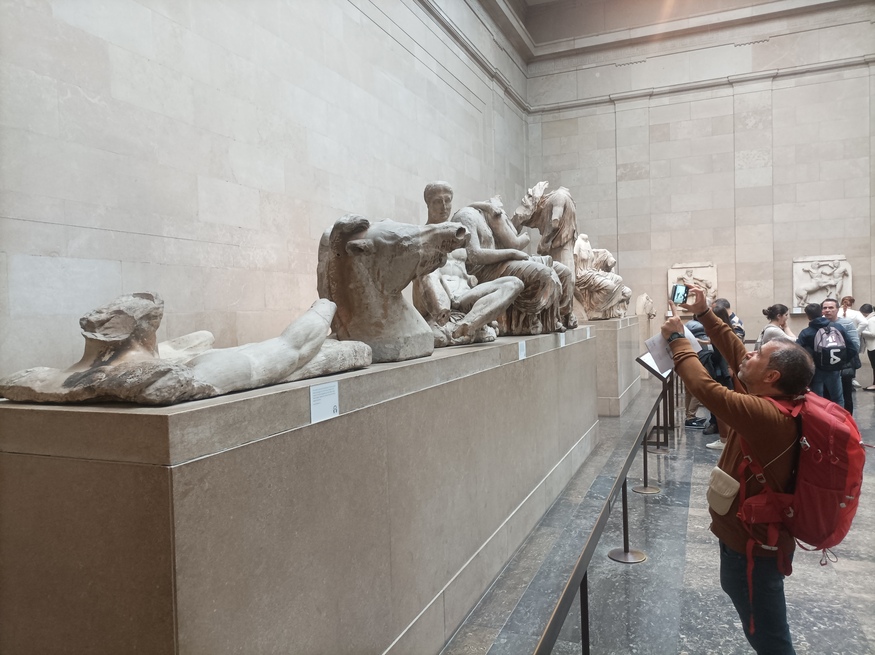Visiting the British Museum? Here's what you need to know.
What is it? Founded in 1753, the British Museum was the first national public museum in the world, granting free admission to all 'studious and curious persons'. Visitor numbers have swelled from around 5,000 a year in the 18th century to over six million today.
What to see at the British Museum? Great hunks of Greek statues. Egyptian mummies. Ancient musical instruments. Sundry wonders of the world. You could come here every day for a year and still not see everything.
Is the British Museum about Britain though? Not really, no. More about the stuff the Brits got their hands on back in the day (meaning some of the objects are not without controversy).
And the absolute highlights? Among the most popular things to see are the Rosetta Stone (the key to unlocking hieroglyphs), the singular Anglo-Saxon treasures of Sutton Hoo, and the frankly wacky Parthenon Marbles.

Top tip? Assuming you're not visiting with your parents, go check out the museum's long-lost porn room. There are also loads of extra guided tours, lates and experiences — including a free bi-monthly Japanese tea ceremony.
Is the British Museum free? Entry to the permanent collections — a big chunk of the museum — is totally free. You can always donate at the entrance, or buy something from the gift shop.
What's the deal with the exhibitions? The British Museum puts on some of the biggest exhibitions in London, and there's almost always an entrance fee. Blockbusters in recent years include The World of Stonehenge, and Hokusai: The Great Picture Book of Everything.
When is the British Museum open? 10am-5pm daily, except Fridays when it's open till 8.30pm.
How do you get to the British Museum? Closest tube stations are: Russell Square (Piccadilly), Holborn (Central and Piccadilly), Tottenham Court Road (Central, Northern and Elizabeth) and Goodge Street (Northern).



